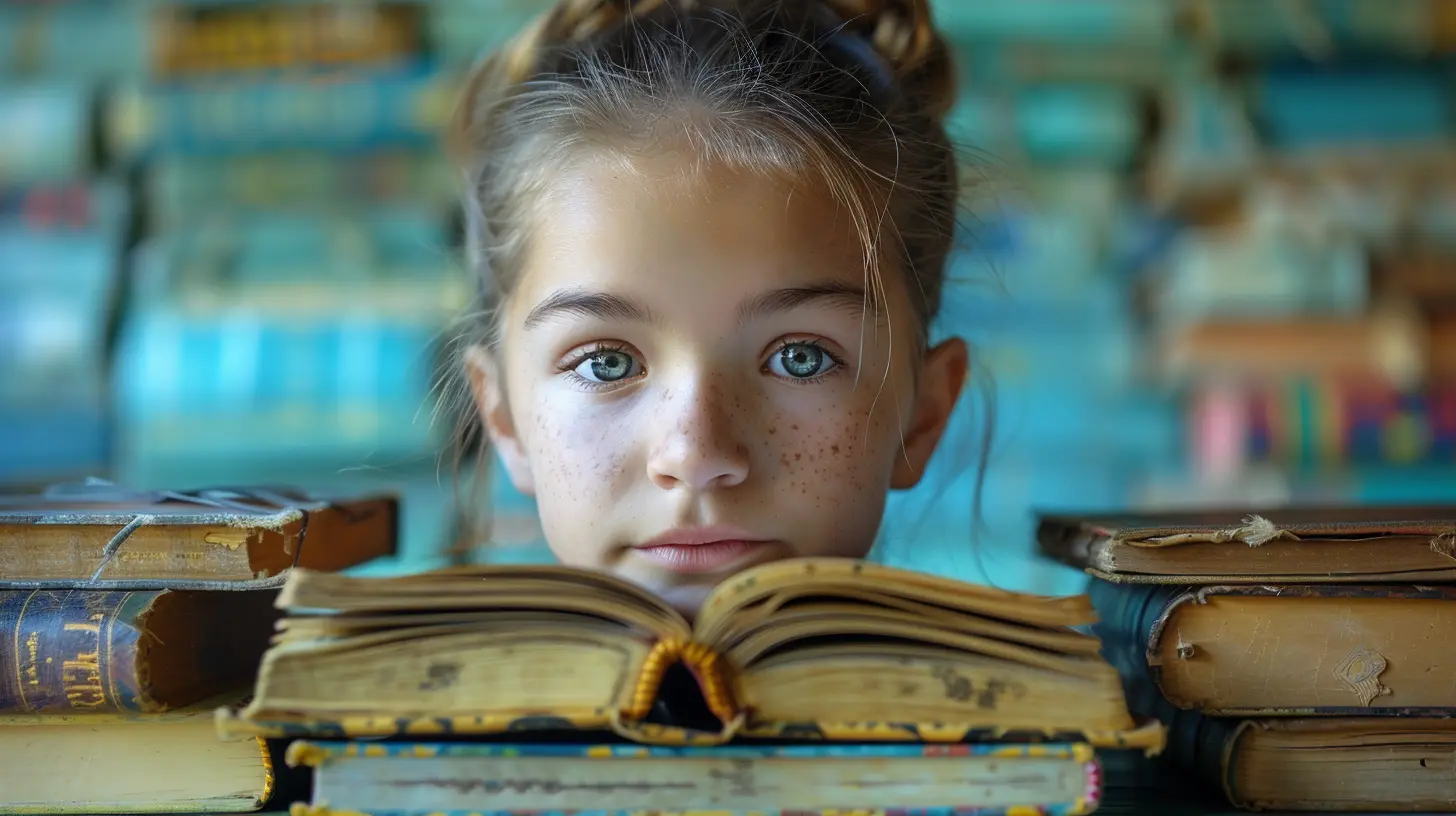How to Use Read-Alouds to Develop Critical Thinking
18 September 2025
If you've ever curled up with a good book and shared it aloud with a child, then you already know that magic moment when their eyes light up. But did you realize that beyond bonding and boosting language skills, there's something even more powerful happening during read-alouds? Yep — we're talking about developing critical thinking, that elusive superpower that helps kids make decisions, question ideas, and solve problems.
So how does reading aloud achieve all that? Grab your cup of coffee, settle in, and let’s unpack how this simple, age-old activity can pave the way for future thinkers, leaders, and change-makers.
What Exactly Is Critical Thinking?
Before we jump straight into the "how," let’s hit pause and ask — what do we really mean by critical thinking?Critical thinking isn't just about being smart. It’s about being thoughtful, analytical, and curious. It's the process of questioning, evaluating evidence, making connections, and solving problems logically.
In a world swimming in information (and misinformation), kids need to be not just consumers of info but active explorers, capable of questioning what they hear, read, and see. That’s where read-alouds enter the scene — not just to entertain but to invite kids into deeper thought.
Why Read-Alouds Are More Than Just Storytime
Sure, read-alouds can be cozy and comforting, but there’s more beneath the surface. When done right, they become interactive experiences, like mini think-tanks for young minds.Whether it's pausing after a plot twist, giggling over a silly character, or debating a moral decision — each moment presents a golden opportunity for critical dialogue.
Think about it: when a character makes a bold choice, what if we ask, “Was that the right decision? What else could they have done?” Suddenly, we’re not just reading. We’re reasoning.
The Magic Mix: Reading Aloud + Interaction
Here’s the secret sauce — it’s not just about reading aloud; it’s what you do during and after the reading. The goal is to encourage talk, questions, and even disagreements.Let’s take a closer look at how to turn a basic read-aloud into a critical-thinking adventure.
1. Choose the Right Books (Not Just Popular Ones)
Not every book sparks deep thinking. Some are better than others for inviting questions, moral dilemmas, or emotional responses.Here’s what to look for:
- Complex Characters – Characters who struggle, grow, or make questionable choices.
- Moral Dilemmas – Books where right and wrong aren't black and white.
- Surprising Plot Twists – Stories that make readers stop and say, “Wait, what just happened?”
- Rich Themes – Think kindness, bravery, justice, identity, loss, friendship.
Some examples to get started:
- The Paper Bag Princess by Robert Munsch (gender roles and independence)
- Each Kindness by Jacqueline Woodson (bullying and regret)
- Where the Wild Things Are by Maurice Sendak (emotional regulation)
The key? Pick books that make kids think, not just laugh.
2. Model Your Thinking Out Loud
Ever heard of “thinking aloud”? It’s a powerful technique where you basically narrate your thoughts while reading.For example:
> “Hmm, I wonder why the rabbit lied to the tiger here. That doesn’t seem like a smart move… What could happen next?”
By showing how you think, you’re teaching kids to do the same. You’re giving them a mental mirror — and trust me, they’ll pick up on it.
3. Ask Open-Ended Questions (And Lots of Them)
Forget yes-or-no questions like “Did you like the story?” Instead, go for open-ended ones that require some thought. Questions like:- “Why do you think she did that?”
- “What would you have done in that situation?”
- “How did this part make you feel?”
- “What would happen if the story ended differently?”
Bonus tip: Let silence do some of the work. Wait. Give them time to mull it over. Sometimes the best answers come after a thoughtful pause.
4. Encourage Predictions and Inferences
Get their intellectual wheels turning by pausing mid-story and asking:- “What do you think will happen next?”
- “Why do you think he’s acting that way?”
- “What clues from the story make you think that?”
This not only keeps kids engaged but also builds their analytical muscles. It’s like mini-detective work — looking for clues, making guesses, and checking if they were right.
5. Discuss Multiple Perspectives
Kids often see the story from the main character’s point of view — and that’s natural. But what if we flipped it?Try saying:
> “Let’s think about how the wolf felt in this scene. Was he really being mean, or just misunderstood?”
This helps kids recognize that there's more than one way to see a situation — a core part of critical thinking and empathy.
6. Connect Books to Real Life
Books don’t exist in a vacuum, right? They reflect our world.So after reading, ask:
- “Have you ever felt the way this character felt?”
- “Can you think of a time something similar happened in real life?”
- “How would you solve that problem if it happened in our classroom?”
Making connections to everyday life deepens understanding and makes abstract ideas more tangible.
7. Reflect and Revisit
Don’t just close the book and move on. Come back to it later and ask:- “Have you changed your mind about the character?”
- “Does the story remind you of another one we read?”
- “Is there something new you noticed this time?”
Reflection is where deeper thinking lives. It’s like marinating an idea — it soaks in better with time.
Bonus Techniques to Boost Critical Thinking
Wanna take things up a notch? Try these tricks:Use Think-Pair-Share
Ask a question, let kids think quietly, then pair up to discuss, and finally share with the group. This gives everyone a voice and encourages deeper thought.Visualize the Story
Have kids draw events, characters, or feelings — this helps them process on a different level. Sometimes pictures speak louder than words.Role Play
Act out scenes and switch roles. This shows kids how stepping into someone else’s shoes changes their perspective.Ask Them to Reimagine the Ending
What if Cinderella said, “Nah, I’m good without the prince”? Let kids rewrite or reframe the ending. It gets them thinking creatively and critically.Real-Life Example: A Story of Critical Thinking in Action
Let’s say you're reading The True Story of the Three Little Pigs by Jon Scieszka — a twist on the classic from the wolf’s POV.You pause and ask:
> “Do you believe the wolf's version of the story? Why or why not?”
Suddenly, you're not just reading. You're examining evidence, comparing perspectives, and forming arguments. Kids might even get into a mini debate — and that's a win.
Overcoming Common Roadblocks
Worried your kids will just shrug and say, “I don’t know”? Don’t panic. That’s totally normal at first.Keep these tips in your back pocket:
- Rephrase your questions if they don’t answer right away.
- Model curiosity yourself — if you’re excited, they’ll follow.
- Be patient — critical thinking builds gradually, not overnight.
And always celebrate their ideas, even if they’re out-of-the-box. Creativity is part of critical thinking too.
Final Thoughts: Plant the Seeds Today
Read-alouds aren't just literacy tools. They're conversation starters, brain builders, and empathy enhancers. They open doors for kids to think deeper, ask harder questions, and see the world in new ways.Think of it like gardening. Every time you read and discuss, you’re planting a seed. Some grow fast, others take time, but each one adds to a child’s ability to think critically and independently.
So next time you pick up a book to read aloud, remember — you’re not just reading. You’re shaping a thinker.
Frequently Asked Questions
How often should I do read-alouds?
Daily if possible! Even just 10–15 minutes a day can have a big impact.What age is best for developing critical thinking through read-alouds?
It’s never too early. Even preschoolers can begin learning to think critically when you ask questions and talk about feelings or actions.Do I need special training to do this?
Not at all. Just be curious, open, and willing to explore ideas together with your child or students.Can picture books really build critical thinking?
Yes! Don’t underestimate them. Many picture books are layered and perfect for deep discussions.all images in this post were generated using AI tools
Category:
Reading ComprehensionAuthor:

Anita Harmon
Discussion
rate this article
1 comments
Carla McFarlane
Great insights! Read-alouds truly foster critical thinking skills in children, nurturing their comprehension and engagement in a delightful way. Thank you!
October 4, 2025 at 12:46 PM

Anita Harmon
Thank you! I'm glad you found the insights valuable. Read-alouds are indeed a wonderful tool for fostering critical thinking in children!


